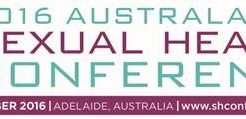A study has confirmed that Female Genital Mutilation/Cutting (FGM/C) is seen in paediatric clinical practice within Australia. Paediatricians need cultural awareness, education and resources to help them identify children with FGM/C and/or who are at risk of FGM/C, to enable appropriate referral and counselling of children, families and communities to assist in the prevention of this practice. Further detail of the study are provided below.
To learn more about Responding to Female Genital Mutilation as a women’s health issue, please enrol in SHine SA’s upcoming forum.
Arch Dis Child doi:10.1136/archdischild-2016-311540
Abstract
Objective The WHO reports that female genital mutilation/cutting (FGM/C) is an ancient cultural practice prevalent in many countries. FGM/C has been reported among women resident in Australia. Our paper provides the first description of FGM/C in Australian children.
Design Cross-sectional survey conducted in April–June 2014.
Setting Paediatricians and other child health specialists recruited through the Australian Paediatric Surveillance Unit were asked to report children aged <18 years with FGM/C seen in the last 5 years, and to provide data for demographics, FGM/C type, complications and referral for each case.
Participants Of 1311 eligible paediatricians/child health specialists, 1003 (76.5%) responded.
Results Twenty-three (2.3%) respondents had seen 59 children with FGM/C and provided detailed data for 31. Most (89.7%) were identified during refugee screening and were born in Africa. Three (10.3%) were born in Australia: two had FGM/C in Australia and one in Indonesia. All parents were born overseas, mainly Africa (98.1%). Ten children had WHO FGM/C type I, five type II, five type III and six type IV. Complications in eight children included recurrent genitourinary infections, menstrual, sexual, fertility and psychological problems. Nineteen children (82.6%) were referred to obstetrics/gynaecology: 16 (69.9%) to social work and 13 (56.5%) to child protection.
Conclusions This study confirms that FGM/C is seen in paediatric clinical practice within Australia. Paediatricians need cultural awareness, education and resources to help them identify children with FGM/C and/or at risk of FGM/C, to enable appropriate referral and counselling of children, families and communities to assist in the prevention of this practice.
Access full text (open access) here
Source: SASHA









